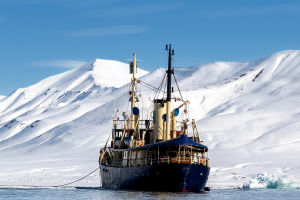The endeavor to establish scientific stations on floating ice commenced with the inception of the first International Polar Year in 1882-1883.
Initially, the focus of this program was predominantly confined to the coastal regions of the Arctic Ocean.
However, the central Arctic basin remained largely unexplored due to the absence of suitable means of transportation across the ice-water terrain, including the intricate inter-ice channels and ice ridges.
This situation persisted until 1925 when Norwegian explorer Amundsen achieved a significant breakthrough by successfully landing an airplane on the drift ice, ushering in a new era for the establishment of scientific research stations on ice floes.
Fast forward to the present day, where the prevalence of winter cold waves and other extreme weather phenomena has become increasingly frequent.
Notably, the Arctic, particularly the central Arctic Ocean, presents a considerable challenge in weather forecasting due to its inherent cognitive gap zone. Consequently, the plan to establish scientific stations on floating ice has attracted significant attention from scientists and policymakers across the globe since its proposal.
In September, within the frigid confines of Tromsø harbor, Norway, the chill in the air was palpable as members of the scientific research team from the China Polar Research Center, including researcher Lei Ruibo and engineer Lan Musheng, stood before the imposing figures of the German icebreaker "Polar Star" and the vessel "Academician Federov."
Despite initial hesitancy, they shared a moment, capturing a photograph that encapsulated both their determination and humility.
This snapshot marked the beginning of their collaborative efforts with scientists from 19 countries, including Germany, the United States, France, the United Kingdom, and Canada, to embark on the Multidisciplinary Drifting Observatory for the Study of Arctic Climate (MOSAiC) program.
The MOSAiC program stands as a testament to international cooperation, representing the largest collaborative initiative in the central Arctic Ocean to date. With over 500 participants, including more than 200 scientists on site, the program aims to deepen our understanding of Arctic climate dynamics.
Anchored by the German icebreaker "Polarstern," the MOSAiC expedition commenced in the fall of 2019, strategically positioning itself in the northern sector of the East Siberian/Laptev Sea.
Over a year, the icebreaker would drift with the prevailing currents, conducting continuous manned observations to unravel the intricacies of the Arctic climate system.
This comprehensive endeavor encompasses a multitude of disciplines and support capabilities, spanning atmospheric physics, chemistry, sea ice dynamics, physical oceanography, marine ecology, and biogeochemistry.
The array of support platforms deployed for the MOSAiC program includes not only the "Polarstern" icebreaker but also fixed-wing aircraft, helicopters, underwater robots, unmanned aerial vehicles (UAVs), and the Chinese icebreaker "Xuelong 2."
By synergizing cutting-edge technology with interdisciplinary research, the MOSAiC program endeavors to enhance our predictive capabilities in Arctic weather forecasting, sea ice prediction, and climate modeling.
As the most extensive drifting ice station program worldwide, MOSAiC represents a pivotal step forward in our quest to unravel the complex interplay of atmospheric, oceanic, and ecological processes shaping the Arctic climate system.
Furthermore, the MOSAiC program serves as a beacon of scientific innovation, fostering collaboration beyond geographical and political boundaries. Through data collection and analysis, it aims to address pressing global concerns, including climate change mitigation and adaptation.
By shedding light on the Arctic's role in the Earth's climate system, MOSAiC provides crucial insights into the broader implications of environmental shifts.


